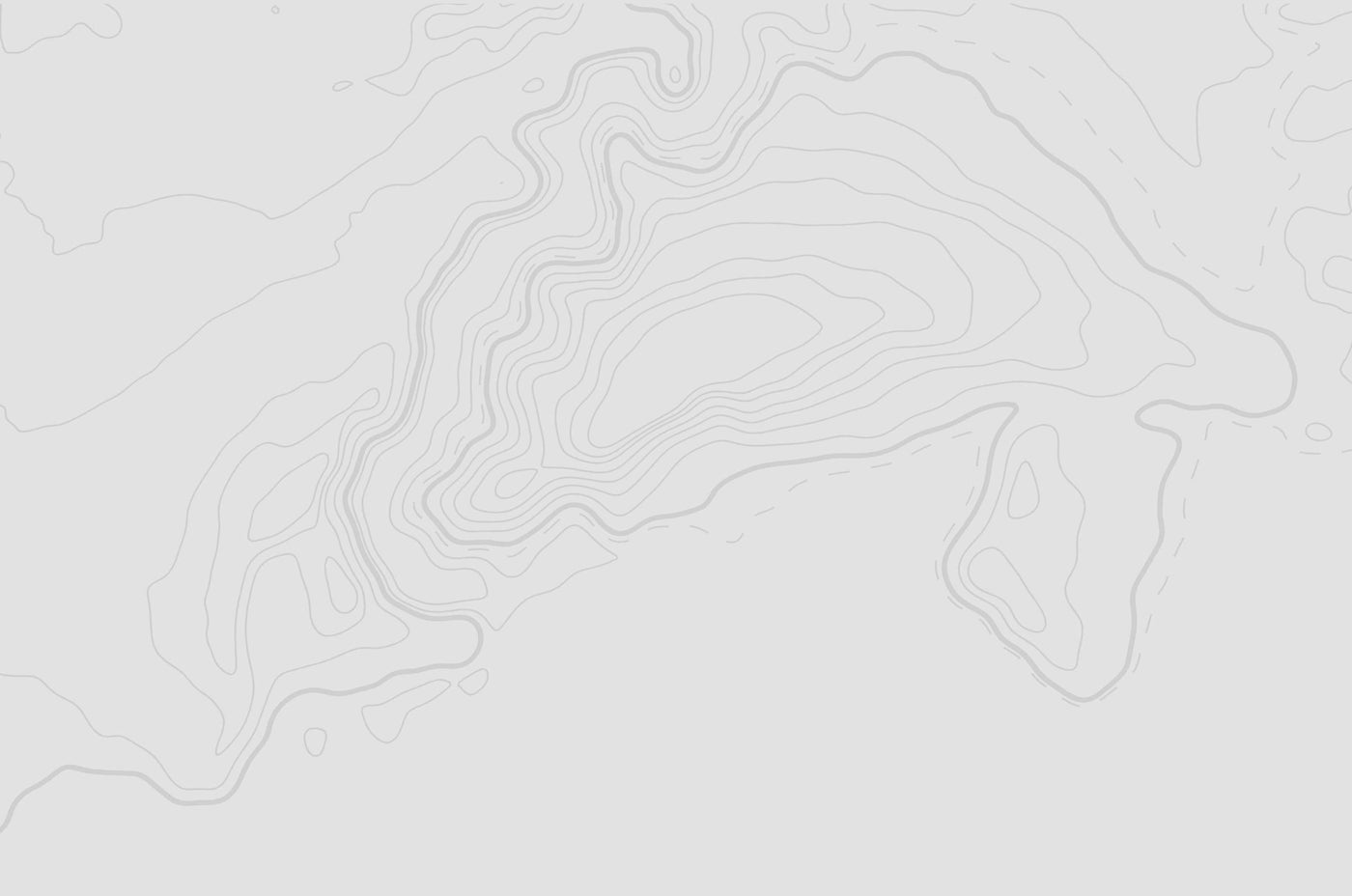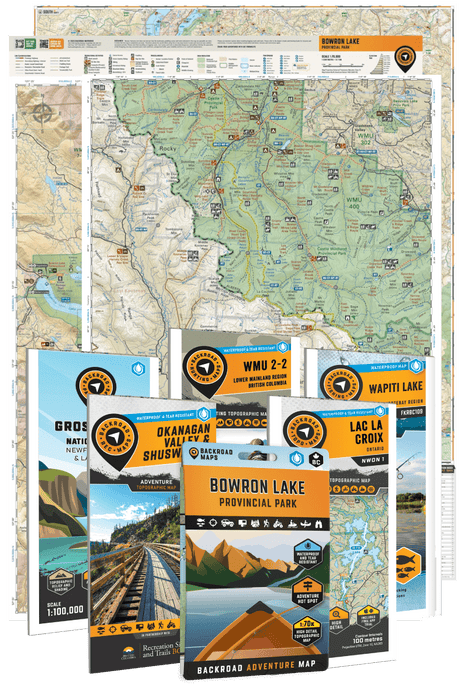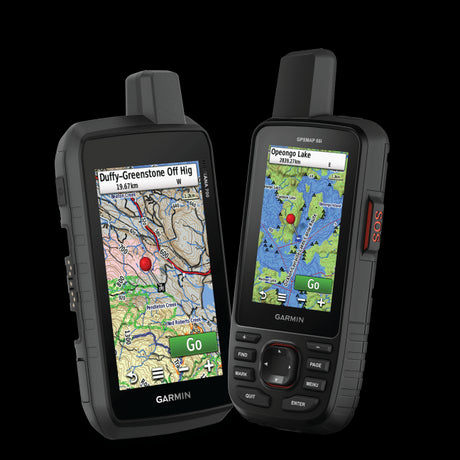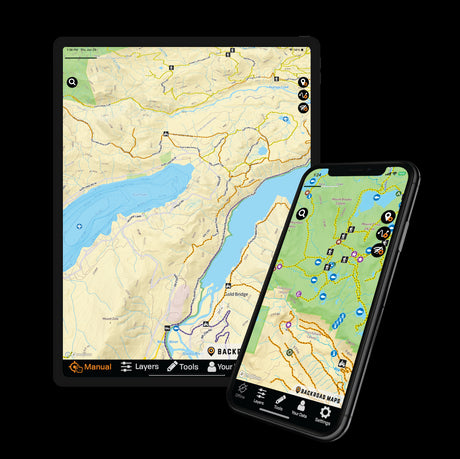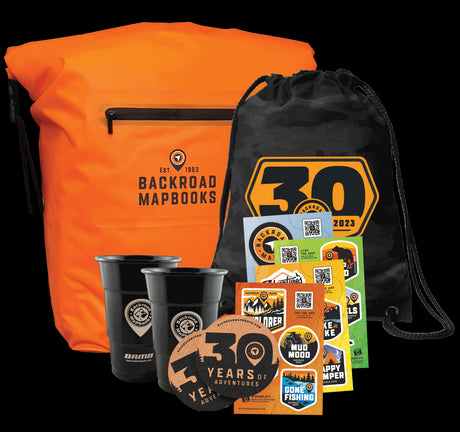It’s no secret that Canada is full of amazing hunting opportunities. On the west coast, deer roam the forests and valleys in abundance. In the prairies, waterfowl are found in marshes and farmer’s fields in astounding numbers. In Ontario, moose glide with surprising grace through the thick brush. And in Newfoundland, woodland caribou travel the windswept grasslands in herds of thousands of animals. No matter which part of the country you find yourself in, you have the opportunity for the hunt of a lifetime.
With hunting season upon us, the BRMB crew is looking ahead to a year full of outdoor adventure, and there are plenty of hunts that we want to cross off our bucket list. To share the excitement with you, we’ve put together the following blog – we’re sure it will inspire you to grab your rifle or crossbow and head into the backcountry!
Black-Tail Deer Hunting on Haida Gwaii, British Columbia
Black-tail deer were first introduced to Haida Gwaii, then the Queen Charlotte Islands, in 1898. With a lack of natural predators, the deer population has steadily grown since then, to the point that the deer population is now considered a nuisance on the Islands. To reflect this, there is a very generous limit for black-tails on Haida Gwaii – fifteen deer per year, or five in possession. Antlered Sitka blacktails can be taken in the early season, and there is an antlerless season in the fall as well. Haida Gwaii has seen extensive logging throughout the 20th century, meaning that there are forest service roads offering excellent access into the backcountry. And not only are your chances of success extremely high, but you will be hunting among one of the most biologically diverse and visually stunning ecosystems in Canada.

Elk Hunting on Alberta’s Eastern Slopes
Bagging an elk is no easy task. These majestic beasts hang out in gangs in remote areas with dense cover, making them hard to find and making you easy to detect, since there are multiple pairs of eyes and ears working together to look out for danger. However, these challenges make a successful elk hunt that much more rewarding. And one of the best places to hunt elk in Canada is on eastern slopes of the Canadian Rockies, where the eighth and twelfth place elks of all time have been harvested. The peak of the rut falls in the middle of September and this is the best time to head out on an elk hunt. Using both bull calls to challenge the bull and cow calls to lure him in close is a good strategy for a successful hunt.

Bighorn Sheep Hunting in Willmore Wilderness Provincial Park, Alberta
Willmore Wilderness Park covers 4,600 km2 (1,775 mi2) of pristine Alberta backcountry, including some of Canada’s best bighorn sheep habitat. A bighorn hunting trip here is no easy task, however – since motorized vehicles are not allowed in Willmore, you will have to embark on a lengthy hike or horseback ride to reach bighorn territory. Trekking 30, 40 or 50 km is par for the course, and if you are successful, getting out with your kill is a whole other challenge. However, those that take the time to train and condition themselves can enjoy a bucket list hunt in the most successful bighorn region in Alberta. Hiring an outfitter is a great way to simplify the logistics of bagging a Willmore bighorn sheep.

Whitetail Deer Hunting Around Saskatoon, Saskatchewan
A combination of genetics and ideal habitat makes Saskatchewan one of the best places in the world to hunt whitetail deer. In fact, the world record whitetail was shot in Saskatchewan by a local farmer in 1993, featuring an inside spread of 69 cm (27 in). And with relatively mild winters occurring over the past few years, the deer population is at a high point. This is reflected in a longer open season in several Wildlife Management Zones (WMZs), as well as added antlerless hunting opportunities. If you’re looking to bag a white-tail, whether with a rifle or a bow, you can find several excellent hunting areas within an easy drive from the major urban centre of Saskatoon. Aberdeen (WMZ 41), Borden (WMZ 44) and Rosthern (WMZ 30) are just a few small communities where you can base a white-tail hunt from. There are plenty of community pastures, Crown land and forests to explore in the area.

Duck Hunting In Manitoba’s Interlakes Region
Sitting on the route of a major migratory flyway, Manitoba’s Interlakes region sees millions of waterfowl pass through it every year. Bounded by Lake Winnipeg to the east and Lake Manitoba to the west, the area acts as a natural funnel for birds. Numerous pothole lakes, marshes and farmers’ fields make ideal stopping points for ducks on the move looking to stop to rest or fuel up with a snack. From bluebills to canvasbacks to greenheads, your choices are plentiful and the bag limit is generous. The open season usually lasts from September through November and a good hunting dog, camouflage and plentiful decoys will usually guarantee a productive day of duck hunting in the Interlakes.

Black Bear Hunting in Atikokan, Ontario
Black bear are one of the biggest game species you can hunt in Canada, with adult males weighing up to 270 kg (600 lb), and one of the best places to hunt them is around the northern Ontario city of Atikokan. It is estimated that there are 40-60 bears per 100 km2 (38 mi2) here and, depending on the hunter’s preference, bears may be pursued by stalking or taken from a tree stand or ground blind. The open season in most WMUs around Atikokan is from May 1st to June 15th for both resident and non-resident hunters, with additional late summer and fall open seasons as well. As with most big-game hunts in Canada, non-residents are required to employ the services of a licensed outfitter.

Ruffed Grouse Hunting in Quebec’s Laurentides
Home to the rolling Laurentian Mountains and vast tracts of uninterrupted forest, the Laurentides region of Quebec is easily accessed from Montreal and offers some of the province’s best hunting opportunities for hunting ruffed grouse, one of the most exciting game birds you can target. These medium-sized birds are slightly smaller than a chicken and are very territorial, claiming a range of a few acres and finding a fallen tree or rock to climb and beating their wings on and impress any nearby hens. If you are walking through the forest and you here this drumming, you’ll know you are in grouse country. The Laurentides region is even home to a nature preserve that offers a special fall hunting season specifically for small game such as ruffed grouse.

Woodcock Hunting in New Brunswick’s Miramichi Valley
Woodcocks are small, stocky birds with long, slender bills and eyes located on either side of their head, which gives them a 360-degree vision. With a generous limit of eight birds per day and the largest concentration of woodcock on the continent, game bird hunters are in for a treat in New Brunswick’s Miramichi Valley. From forests to farmer’s fields, the valley is full of prime woodcock habitat. As with most bird hunting, a good hunting dog will give you a big advantage while out in the field on this bucket-list bird hunt.

Ring-Necked Pheasant Hunting in the Annapolis Valley, Nova Scotia
Most often found in open fields and grassy roadsides, the ring-necked pheasant was introduced to Nova Scotia way back in 1856. Adult males can reach up to 90 cm (35 in) in length, with their long tail accounting for over half of this distance. They are known for their colourful plumage, while in comparison females are far duller in colour. The Annapolis Valley is known as a pheasant hunting hotspot in nova Scotia, with its cleared farmlands providing ideal habitat for the birds. Since the open season begins after the autumn harvest is complete, many farmers are open to allowing pheasant hunters onto their land – just be sure to ask first. There is currently a limit of two roosters per day, but if you meet your quota you can usually find some ruffed grouse in the area as well.

Moose Hunting in Newfoundland’s Great Northern Peninsula
Newfoundland is world-famous for its abundant moose population. The ungulates were first introduced to the island in 1904 and, with a lack of any major predators, their population has exploded to a current tally of around 120,000 animals. There is a generous quota of 30,000 tags issued by the government, and hunters enjoy a success rate of close to 90 percent, with lots of opportunity for both rifle and bow hunting. Since much of the Island is undeveloped, moose hunting can be good all across the province, but the rugged beauty of the Great Northern Peninsula makes it especially attractive for moose hunters. If you are travelling from outside of Newfoundland to hunt you will have to hire an outfitter, but the expert knowledge these hunting professionals provide is well worth the price.

Canada Goose Hunting in Cavendish, Prince Edward Island
Each September, around 75,000 Canada geese cross the gulf of St. Lawrence and make a stop on Prince Edward Island to feed and rest on the way to their wintering grounds. The birds like to stage in the sheltered bays of the Island’s north coast, and one of the best places to head out on a goose hunt is in the Cavendish region. This area is legendary for its high yield of waterfowl and there is a liberal daily bag limit of five birds.

Wood Bison Hunting Near Haines Junction, Yukon
While bison were once extinct in the Yukon, since being reintroduced in the 1980s their population has grown from 140 animals to around ten times that number. To manage the population, bison hunting is actively encouraged by the government and getting a tag is easy for both the fall and winter seasons. Located in the Yukon’s southwest at historic Mile 1016 of the Alaska Highway, the Village of Haines Junction is the perfect place to stage your Yukon wood bison hunt. With a little luck and the services of a local outfitter, you will be able to bag North America’s largest native land mammal.

Dall’s Sheep Hunting in the Mackenzie Mountains, Northwest Territories
Dall’s sheep are elusive and nimble creatures, with adult rams weighing up to 100 kg (220 lb) and sporting a distinct pair of curved horns (ewes are smaller but have horns as well). In the Northwest Territories, sheep hunting season opens on July 15th and runs through the end of October. A hunt for Dall’s sheep usually includes a helicopter ride into their territory, followed by a long hike or horseback ride – you can expect to spend ten days or so on a successful hunt. Sheep are found beginning at the Liard River at the south end of the Mackenzie Mountains all the way to the Peel River at their north end, with the densest population found in the northern sections.

Caribou Hunting in Kivalliq, Nunavut
Nunavut is home to more than 750,000 caribou, with the barren-ground subspecies particularly prized among hunters. While there are many communities that offer guided caribou hunts across the Territory, the Kivalliq region offers especially good access to caribou territory. There are several communities that offer guided caribou hunts including Arviat, Baker Lake, Chesterfield Inlet, Coral Harbour and Rankin Inlet. Caribou hunting is part of a generations-old tradition in Nunavut, with the Inuit harvesting these majestic animals to provide food, shelter, clothing and tools since the stone age. Hunting is highly dependant on the caribou herd’s migration pattern since these animals travel as far as 1,200 km (745 mi) from one seasonal pasture to the next. When it comes to a bucket-list caribou hunt, Kivalliq is the perfect starting point.

Navigate your way through these and many more bucket-list hunting adventures with the help of our Backroad Mapbooks and GPS Maps! We show you clearly defined hunting areas, Crown land and private lands, plus countless trails and backroads for access into the best hunting territory across Canada. From all of us here at BRMB, happy hunting!

